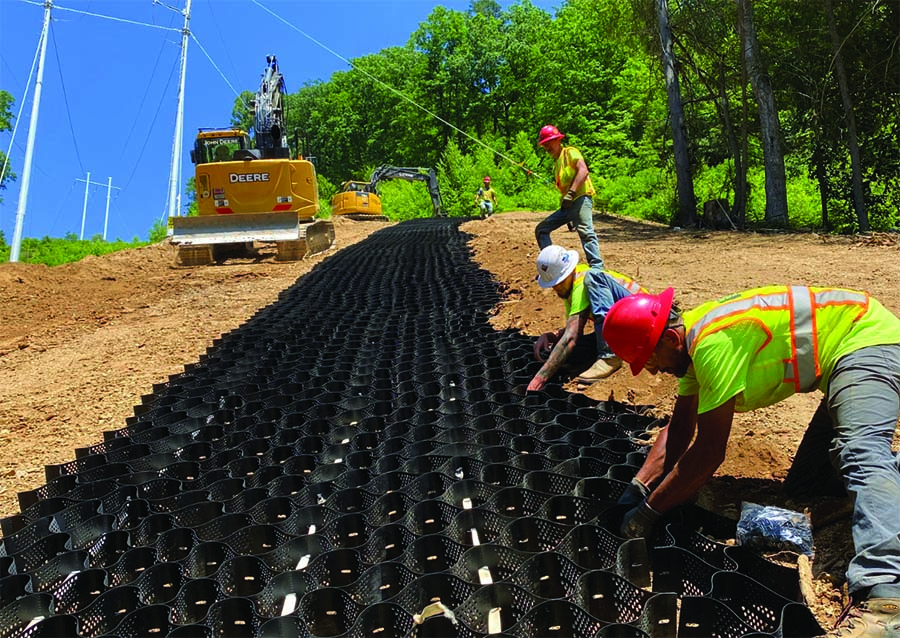
Transmission lines are integral to supplying power to homes and businesses throughout the country. Confronted with variable terrains, geohazards, and other site complications, transmission line construction projects must contend with a wide range of complexities, including the extreme challenge of traversing mountainous regions. Often at these locations, the hillside needs to be benched to create a level pad for the electrical transmission line tower foundations. If not properly mitigated, the cutting of these slopes can lead to erosion, potentially endangering the long-term stability of the towers.
A major U.S. electric utility company encountered these challenging terrains on three of its towers on a transmission line running through the Appalachian Mountains near Baileysville, W.V. Parts of the tower pads were originally created using previously excavated material, but surficial sloughing at two of the sites occurred due to the steep slope angles and loosely placed materials. At the third location, similar issues arose with added complications due to water flow over the bench, which caused tension cracks along the steepest part of the bench.
To address these issues, the project engineer chose to incorporate the GEOWEB Slope Protection System into the project design, citing the long-term erosion protection and resilience as the main reasons. Using Presto Geosystems’ free project evaluation service, the project engineer reached out to the Geosystems design team for assistance with product and anchoring selection. Prior to placing the GEOWEB system at each location, the contractor, Cook’s Excavating LLC, had to excavate the slide material and replace it in 8-inch (20.3-cm) compacted lifts.

The area of concern at the first structure location consisted of 2:1 (26.5°) slopes with a maximum vertical height of 55 feet (16.8 m) (123 foot [37.5 m] slope length). The recommended solution was GW30V6 (6 inch [15.2 cm] depth) geocell filled with topsoil, anchored with three TP-225 tendons (polyester strap with 5,100 pound [ 2,313 kg] break strength) per panel, and an ATRA® Tendon Clip tied to the tendons every sixth cell downslope. At the crest, the tendons were tied to a 6 inch (15.2 cm) diameter PVC pipe buried 4 feet (1.2 m) below grade.
At another structure location, the area of concern consisted of 50 foot (15.2 m) tall slopes at a 1.2:1 slope angle (40°), creating 78 foot (23.8 m) slope lengths. The recommended solution at these two locations was again GW30V6 filled with topsoil.
Due to the increased slope angle, six TP-225 tendons were used per panel, with an ATRA Tendon Clip every sixth cell downslope. At these locations, the tendons were tied to an 8 inch (20.3 cm) diameter PVC pipe buried 6 feet (1.8 m) below grade.
After installation, the slope was hydroseeded with a special seed blend supplied by the contractor, with nearly full vegetative cover just nine days after the hydroseeding. The GEOWEB Slope Protection System provided a structurally stable environment for topsoil and sustainable vegetation through a structured network of interconnected cells. The 3D GEOWEB system confined and reinforced the vegetated upper soil layer, thereby increasing its resistance to erosive and sliding forces, and reducing its susceptibility to surficial sloughing for improved long-term slope protection.
Project Highlights
TRANSMISSION LINE STABILIZATION SOLUTION
Location: Baileysville, W.V.
General contractor: Cook’s Excavating
Geosynthetic product: GEOWEB® Soil StabilizationSystem (geocells)
Geosynthetics manufacturer: Presto Geosystems
 TEXTILES.ORG
TEXTILES.ORG


